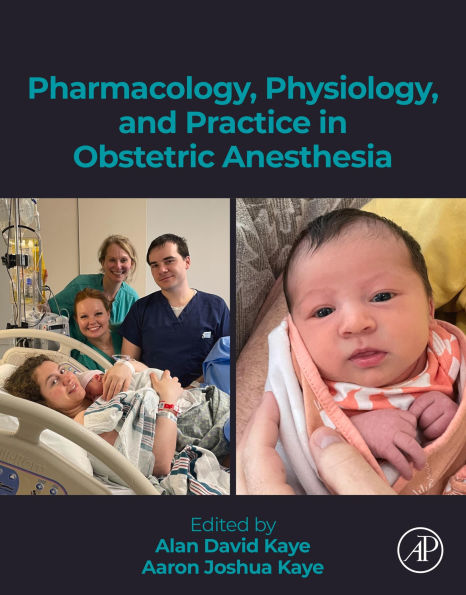Pharmacology, Physiology, and Practice in Obstetric Anesthesia provides all the essentials of obstetric anesthesia in a straightforward, user-friendly format that avoids encyclopedic language and lengthy discussions, and is inclusive of other healthcare specialties and subspecialties including obstetrics, neonatal care, and more. Coverage spans the essentials of obstetrics as well as overlooked issues including obstetric pharmacology and physiology safe practice strategies, clinical concepts for vaginal delivery and C-section, high-risk pregnancy states and management of the complicated parturient, complications and medicolegal, fetus and newborn considerations, and guidelines, standards and statements related to obstetric anesthesia.Pharmacology, Physiology, and Practice in Obstetric Anesthesia is the perfect reference for an interdisciplinary group of health professionals, policymakers, and researchers working and training in the field of obstetric anesthesiology - Clearly addresses all the aspects of practice within the context of obstetrics, anesthesiology, and neonatal care - Discusses new and relevant topics that are important to the field - Provides up to date information in an accessible, user-friendly format
1145953677
Pharmacology, Physiology, and Practice in Obstetric Anesthesia
Pharmacology, Physiology, and Practice in Obstetric Anesthesia provides all the essentials of obstetric anesthesia in a straightforward, user-friendly format that avoids encyclopedic language and lengthy discussions, and is inclusive of other healthcare specialties and subspecialties including obstetrics, neonatal care, and more. Coverage spans the essentials of obstetrics as well as overlooked issues including obstetric pharmacology and physiology safe practice strategies, clinical concepts for vaginal delivery and C-section, high-risk pregnancy states and management of the complicated parturient, complications and medicolegal, fetus and newborn considerations, and guidelines, standards and statements related to obstetric anesthesia.Pharmacology, Physiology, and Practice in Obstetric Anesthesia is the perfect reference for an interdisciplinary group of health professionals, policymakers, and researchers working and training in the field of obstetric anesthesiology - Clearly addresses all the aspects of practice within the context of obstetrics, anesthesiology, and neonatal care - Discusses new and relevant topics that are important to the field - Provides up to date information in an accessible, user-friendly format
175.0
In Stock
5
1

Pharmacology, Physiology, and Practice in Obstetric Anesthesia
600
Pharmacology, Physiology, and Practice in Obstetric Anesthesia
600Related collections and offers
175.0
In Stock

Product Details
| ISBN-13: | 9780443217067 |
|---|---|
| Publisher: | Elsevier Science & Technology Books |
| Publication date: | 03/31/2025 |
| Sold by: | Barnes & Noble |
| Format: | eBook |
| Pages: | 600 |
| File size: | 94 MB |
| Note: | This product may take a few minutes to download. |
About the Author
From the B&N Reads Blog
